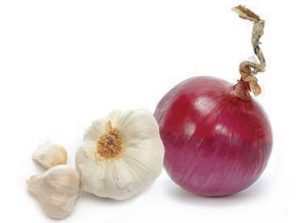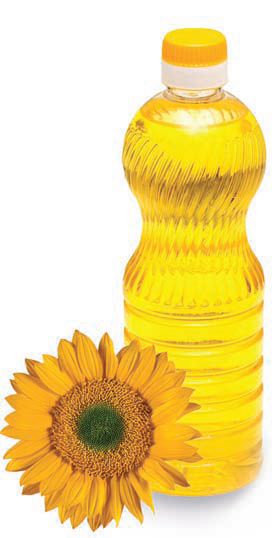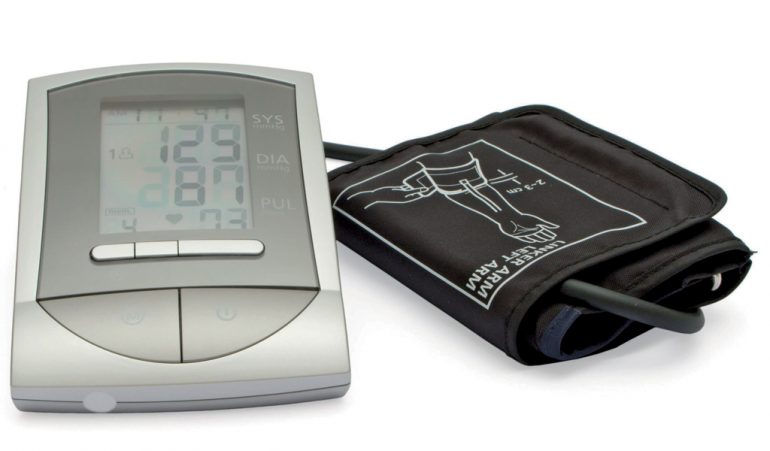“Everybody has — and needs — blood pressure. Without it, blood can’t circulate through the body. Your heart beats about 60 to 80 times a minute under normal conditions.
Your blood pressure rises with each heartbeat and falls when your heart relaxes between beats.”
Kitchen remedies for high blood pressure-
Garlic (Allium Sativumvum): Garlic is a wonder drug for the heart. It has beneficial effects in all cardiovascular system including blood pressure. Gulp 1-2 small pods of garlic on an empty stomach with a glass of water. Garlic is one of the most efficient blood thinners, thereby reducing blood pressure. You may also substitute garlic pods with garlic capsules or pills available through many ayurvedic or natural food supplement stores. You may also use garlic in your cooking, salad, soup, pickles, etc. It is very versatile.
 Onion (Allium Cepa): Onions are useful in hypertension. Two to three tablespoons of onion essential oil a day was found to lower the systolic levels by an average of 25 points, and the diastolic levels by 15 points in hypertensive subjects.
Onion (Allium Cepa): Onions are useful in hypertension. Two to three tablespoons of onion essential oil a day was found to lower the systolic levels by an average of 25 points, and the diastolic levels by 15 points in hypertensive subjects.
Indian Gooseberry Juice (Amla Juice): Vitamin C found in rich quantities in Indian Gooseberry is an antioxidant which prevents free radicals from damaging artery walls and might also lower high blood pressure.
“Blood pressure that stays between 120 – 139 / 80 – 89 is considered prehypertension and above this level (140/90 mm Hg or higher) is considered high (hypertension).”
“The higher (systolic) number represents the pressure when the heart is beating. The lower (diastolic) number represents the pressure when the heart is resting between beats.”
Bananas: Three to four servings of potassium-rich fruits and vegetables are needed daily for an average person. Studies have proven that bananas can help lower blood pressure. Other fruits that work the same way are: winter squash, baked sweet potatoes, cantaloupe, spinach, dried apricots, potatoes (boiled) with skin, orange juice, raisins and currants.
 Lemon: Soak a ring of lemon (like for cocktails) in a glass full of water and let it stay soaked over night. Next day drink this water and keep adding more to the glass as you consume. This not only lowers the blood pressure by increasing urination but also is a great antacid and mouth freshener. You should replace the ring of lemon after 24 hours.
Lemon: Soak a ring of lemon (like for cocktails) in a glass full of water and let it stay soaked over night. Next day drink this water and keep adding more to the glass as you consume. This not only lowers the blood pressure by increasing urination but also is a great antacid and mouth freshener. You should replace the ring of lemon after 24 hours.
 Broccoli: This vegetable contains a lot of fiber which is helpful in lowering blood pressure. Therefore, remember to consume vegetables that are high in fiber. They work as high blood pressure natural remedies.
Broccoli: This vegetable contains a lot of fiber which is helpful in lowering blood pressure. Therefore, remember to consume vegetables that are high in fiber. They work as high blood pressure natural remedies.
Low Fat Milk/Yogurt: Leafy green vegetables and milk prevent high blood pressure. This is due to the calcium that is found in them. But bear in mind to drink skim milk and eat low fat yogurt.
Saffron (Crocus Sativus): Saffron contains a chemical called crocetin that lowers the blood pressure. Use saffron in your cooking. You can also make a tea, non-fat pudding, non-fat ice cream, etc. with it for a strong flavor.
Cayenne Pepper: Cayenne pepper prevents platelets from coming together and thus facilitating good blood flow.
Celery: A photochemical called 3-N-butylphthalide is found in celery which decreases blood pressure. Celery is important as it is the only vegetable that contains this photochemical. Stress hormones that narrows blood vessels can be lowered by eating celery. Therefore, this vegetable is very effective in dealing with high blood pressure which is due to mental stress.
 Canola, Mustard Seed, or Safflower Oils: Cooking with polyunsaturated oils can both lower your cholesterol and blood pressure.
Canola, Mustard Seed, or Safflower Oils: Cooking with polyunsaturated oils can both lower your cholesterol and blood pressure.
Folate: Folate is a B vitamin necessary for formation of red blood cells. It may help to lower high blood pressure in some people, possibly by reducing elevated homocysteine levels. Homocysteine is found in your blood. This substance in great amounts is supposed to lower the stretching ability of your arteries. If you have stiff arteries, this translates to extra work for your heart to pump the blood around. Folate can be found in beans, cereals, Brussels sprouts and asparagus.
Avoid: You should cut down on butter, margarine, regular salad dressing, fatty or red meats, whole milk, cheese, fried foods, ice cream, cookies, cakes, pastries, and fried snacks.
Longer bio:
 Indu Arora, Ayurveda and Yoga Therapist considers herself a student for lifetime. She has been sharing about Yoga philosophy, Yoga Therapy and Ayurveda since 1999. She is inspired by and taught under Kriya Yoga, Himalayan Yoga, Kashmir Shivaism and Sivananda Yoga lineages. She has studied both Yoga and Ayurveda in a traditional Guru paramapara setting. Her teaching style is rooted in empowering and inspiring students to awaken the inner Guru. Her core philosophy is, ‘Nothing has the greatest power to heal, but Self!” www.yogsadhna.com
Indu Arora, Ayurveda and Yoga Therapist considers herself a student for lifetime. She has been sharing about Yoga philosophy, Yoga Therapy and Ayurveda since 1999. She is inspired by and taught under Kriya Yoga, Himalayan Yoga, Kashmir Shivaism and Sivananda Yoga lineages. She has studied both Yoga and Ayurveda in a traditional Guru paramapara setting. Her teaching style is rooted in empowering and inspiring students to awaken the inner Guru. Her core philosophy is, ‘Nothing has the greatest power to heal, but Self!” www.yogsadhna.com






